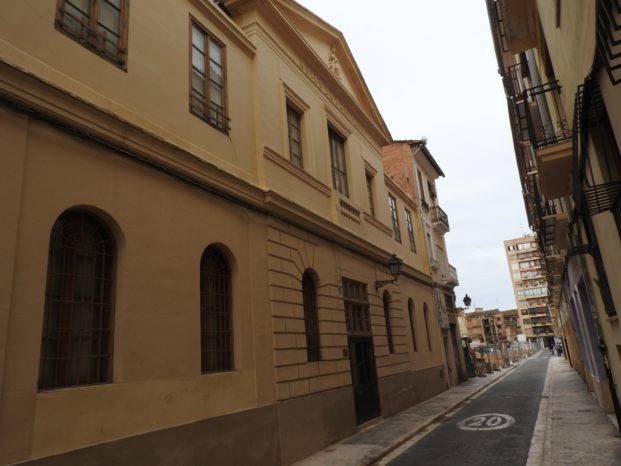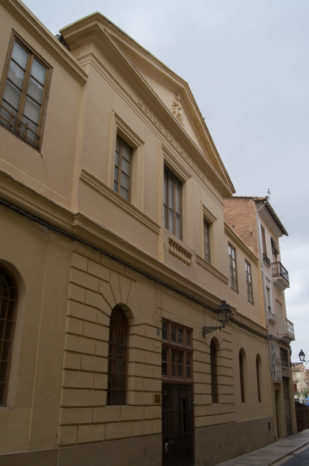Old Kindergarten Asylum
This building is internally linked to the Charity building and the Marqués de Campo Asylum, which overlooks Calle Corona.
Founded in 1863 as a Kindergarten Asylum by Sr. José Gabriel Campo y Pérez, later Marqués de Campo by appointment of Alfonso XII, is a typical building of the architecture of the second half of the nineteenth century, in which two different languages converge: on the one hand the neoclassical and academic style used in the original nucleus of the Asylum, which dates from more or less 1862, being its author the Englishman James Beaty; and on the other, the work made by José Camaña Laymón from 1882, in a late Gothic, evident above all in the church -today parish church of La Miraculosa
This construction consists of a ground floor and an upper floor, topped with a tympanum formed by its double-sided roof. On the ground floor is the access door flanked by two windows in the form of semicircular arches.
The façade of this is treated in two ways: the first is a smooth cement plaster as a plinth that covers the tiles of its structure. From this plinth and up to the upper limit of this ground floor, this plaster is ploughed as false ashlars.
The first floor, which protrudes a little from the lower floor, however, has a plaster of smooth cement, without plowing. And also unlike the lower floor, all its openings - central balcony and windows on its sides - are rectangular. Under these openings, J. Beaty placed a small cornice from side to side of the façade to break the monotony of the smooth wall. At the top is placed a classic flowing frieze, which houses the name of the building
Next is the finish of the building, also protruding from the first floor, which adopts the classic tympanum shape like a Greek temple. In its central vertex there is a single sculptural figure, being covered by tiles in its upper part
Currently both buildings are independent; The Asil de Pàrvulos works as a nursery run by nuns from the Charity Association, and that of the Marqués de Campo belongs to the Catholic University.
This is the only example of strictly academic architecture applied to a charity centre preserved in the city of Valencia.


Dades bàsiques
Calle Corona, 34
46003 Valencia